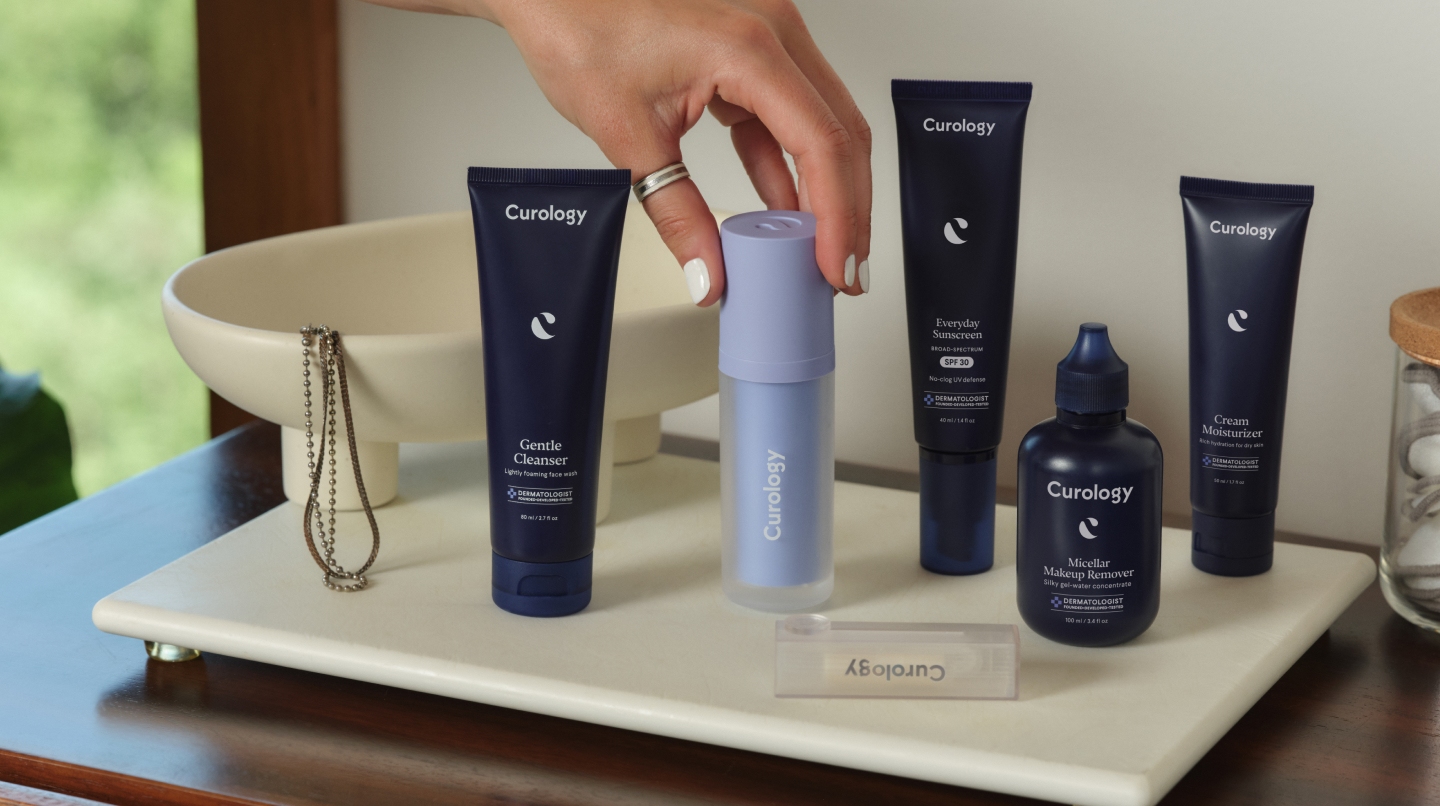How it works:
Share your skin goals and snap selfies
Your dermatology provider prescribes your formula
Apply nightly for happy, healthy skin
How it works:
How it works:
Share your skin goals and snap selfies
Your dermatology provider prescribes your formula
Apply nightly for happy, healthy skin
How it works:
Skincare at home: chemical peels
Get your glycolic acid on without getting off the couch



If you’ve ever wanted to try a chemical peel for acne, hyperpigmentation and skin texture, you can do it without having to leave your house! Chemical peels use different kinds of skin-friendly acids to help shed dead skin cells more efficiently. This helps keep your pores clear and your complexion bright. Whether you’re getting a deeper chemical peel from a professional or doing a gentler superficial peel from the comfort of your home, safety is a top priority. So before we explain how to DIY chemical peels, it’s best to understand the basics.
Types of chemical peels
There are two ways to do a chemical peel: 1) peels you can do from the comfort of your home, or, 2) deeper peels performed by a licensed professional, using higher concentration of active ingredients. You’re unlikely to notice dramatic results from at-home peels. They’re superficial, meaning they generally only affect the outermost layers of the skin. It might take a couple uses before you see a difference!
The peels you can do at home usually use alpha hydroxy acids (AHAs) and/or beta hydroxy acid (BHA). Both are great for helping to unclog pores and wash away dead skin cells, but there are some subtle differences:
AHA = glycolic acid, lactic acid, and mandelic acid (among others). AHAs help reduce hyperpigmentation, increase collagen synthesis, and often work well for dry skin types.
BHA = salicylic acid, often found in chemical peels for acne. Because BHAs are fat-soluble, they can penetrate deep in your pores, clearing out sebum (that’s oil) and dead skin cells.
Start slowly! You can use AHAs and BHAs once or twice a week when you first start out. Still can’t decide which one to use? We got you! Here are some we recommend:

Start your free trial (plus shipping and handling)
How to DIY chemical peels
No two chemical peels are exactly alike. That means reading the directions on your product’s label is a must! That said, if you’re new to chemical peels, these tips will work with pretty much any product.
Step 1: Cleanse. Prep your skin by washing it. Be sure to thoroughly remove makeup, too — micellar water is perfect for this. Generally, you’ll want to let skin dry completely before using a peel.
Step 2: Protect. If you have sensitive skin, you might consider applying a small amount of pure petroleum jelly (like Vaseline or Aquaphor) to the corners of your mouth and your under-eyes. This will help protect these extra-sensitive areas by forming a barrier over the skin.
Step 3: Apply. You can apply most chemical peels with clean fingertips, a brush, or a cotton round. Apply your peel little by little, gradually painting a thin layer across the cheeks, forehead, and jawline.
Step 4: Wait. How long you’ll wait depends on the type of acids in your peel, and how highly they’re concentrated in the product formula. Check your product label for instructions.
Step 5: Rinse. Last — but certainly not least — you’ll want to make sure you thoroughly rinse off your peel. Lukewarm water straight from the sink is typically all it takes. Some products recommend rinsing twice — check your product’s instructions!
Whether you prefer the gentler superficial chemical peels you can do at home or the deeper peels done by professionals, these treatments are rarely cures — especially when it comes to acne. Yes, a chemical peel can definitely help control certain skin woes, but a daily skincare routine is still best!
The best way to treat acne, hyperpigmentation, and skin texture is often with prescription topical treatments. You can get a prescription-strength cream custom-tailored for your skin needs when you sign up for a free month of Curology (you’ll just pay $4.95 + tax to cover shipping/handling).

Curology Team
Related Articles
Men skin care: top concernsHow to get rid of body and back acne?Sunscreen for eyes: How to protect your delicate skin from UV raysYour first weeks on CurologyWrinkles and other signs you’re doing it rightPopular Articles
Ask Curology: Is my cold breaking me out?Slugging: The dermatologist-approved skincare hack going viral on TikTokTretinoin vs retinol: What’s the difference?How to create a self-care routine that actually sticksYour 2023 skincare horoscopeTry prescription skincare
Get routine essentials

Good skin days ahead
- Breakouts
- Redness
- Fine lines
- Dark spots
- Hair thinning